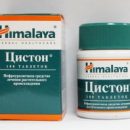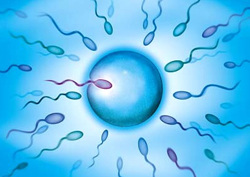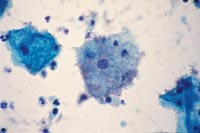The value of the arrogant fluid in the development of the fetus cannot be overestimated, because so the child gets oxygen, the nutritional trace elements necessary for physiological and mental development, hormones, salts, vitamins and other substances that provide a healthy course of intrauterine formation of crumbs.
In case the doctors diagnosed the pathological shortage of amniotic fluid, the further development of pregnancy will occur depending on what time the problem was detected. As a rule, the most dangerous period is the second trimester of the term. For example, if lowland is diagnosed in the first trimester, it will not affect the development of the embryo, and in the third - the risk increases so much that physicians recommend an artificial interruption of pregnancy or premature cesarean section. Our site will tell readers about the main features of such pathology, symptoms and treatment of lowland.
Dangerous consequences of the lowland during pregnancy
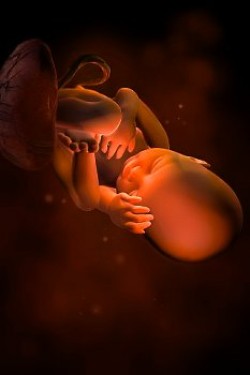
The shortage of the arrogant fluid during the toaling of the child can turn into extremely unpleasant complications, both for the mother and for the crumbs. Consider the most common consequences of multi-way:
- Complications in the overall development of embryo - hypotrophy, hemicephalia, etc.
- Hypoxia fruit due to acute lack of oxygen.
- Weak generic activity (occurs in 80% of cases).
- The appearance of amniotic redesigns, t. E. the captivity of some sections of the skin.
- Loading and complex delivery.
- The hypodynamia of the fetus by reducing the free space inside (entails the dislocation of the thigh, the deformation of the bones of the skull, spine, tilence, etc.).
- Increased blood loss during childbirth, which complicates the postpartum period.
- Major can cause premature contractions, as a result of which a dead or premature child will appear.
- The likelihood of intrauterine fetal death increases.
- High risk of delivery by caesarean section (occurs in 50% of cases).
However, you should not be descended in advance and set yourself up for a tragic outcome. This diagnosis occurs not so often, in most cases doctors diagnose pathology at the earliest stage. Also in medical practice, moderately malfunction happens most often, which is practically not having a threat to the development of the baby's baby and the health of the mother. The main thing is to carefully listen to changes in your body and immediately apply for medical care.
Causes of the appearance of pathology
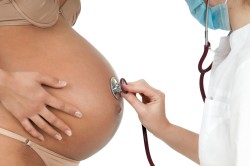
The most dangerous in the shortage of amniotic fluid is that physiological manifestations are practically absent. Pregnant woman feels good, not even suspecting that the complex pathology is currently aggravated. Only in some cases, particularly sensitive women can feel discomfort and pain symptoms during the fetal movement.
To certainly determine whether there is a small mother in the future mother, only a qualified specialist will be able to. Thus, the gynecologist is able to identify the lack of an oily fluid under the following deviations:
- The child is seriously lagging behind the norms of natural development;
- The stomach does not acquire sufficient sizes commensurate with a pregnancy;
- The height of the uterus and the location of its bottom do not correspond to the norm.
If such manifestations are found, the specialist may diagnose «Malovodie». To confirm or refute the assumption, you need to send a pregnant woman to ultrasound. Such a study allows accuracy to see the amount of amniotic fluid, as well as reveal the general state of the fetus and determine the severity of the pathology.
Analyzes and diagnostics

Before the gynecologist can assign correct therapy, it needs to be diagnosed that it was the reason for the occurrence of a low. The degree of shortage of the arrogant fluid can be installed using such analyzes and surveys as:
- Doppler I Ultrasound, Thanks to which a specialist can reveal:
- Quality and intensity of blood circulation in the uterine arteries of the female in labor, as well as in the umbilical cord and brain artery of the embryo;
- the volume of fluid accumulated in the fruine egg;
- clarify the degree of deviation of the physiological development of the child from the norm.
- Blood and urine fence on overall analysis, as well as taking a smear to determine infections and causative agents transmitted by sexually. This diagnostic method will eliminate or confirm the possibility of infectious / viral infection of the embryo, resulting in a low.
- KTG - is carried out for the diagnosis of child's health inside the womb.
In addition to medical examination methods, it is extremely important to conduct a conversation of a psychologist and future mother. The more honest and sincere will be its answers, the easier it is to determine the root cause of pathology and help the child. It is important to establish whether pregnant and alcohol, tobacco and allergenic products abused. Perhaps the future feminine has taken medical preparations and.
Traditional therapy at least

Method of treatment Maldiation during pregnancy will be varied depending on the root causes of the appearance of this state. Also, the process of therapy affects the severity of the pathology and the length of the fetus. Only after a thorough inspection and diagnosis of the causes of development, the above-mentioned methods, a doctor can determine a set of measures for therapy.
Treatment can be carried out in two variations: an outpatient basis - with a moderate development of the pathological condition, and in the hospital - if the degree of lowland threatens the health and life of the mother. For example, if a woman suffers from obesity, specialists appoint her a special diet that will not be able to negatively affect the physical development of the future kid. Such a measure allows you to restore the normal functionality of the placenta.
In general, comprehensive treatment is based on the reception of vitamins and medicines that allow you to eliminate the source of the appearance of pathological lowland. The main thing is that the future mother follows his condition, led a healthy lifestyle and appealed to medical care at the very first suspicion of the development of lowland.

